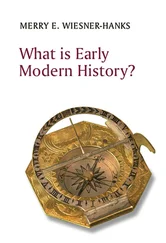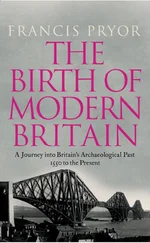R. Nisbet Bain - The Cambridge Modern History
Здесь есть возможность читать онлайн «R. Nisbet Bain - The Cambridge Modern History» — ознакомительный отрывок электронной книги совершенно бесплатно, а после прочтения отрывка купить полную версию. В некоторых случаях можно слушать аудио, скачать через торрент в формате fb2 и присутствует краткое содержание. Жанр: unrecognised, на английском языке. Описание произведения, (предисловие) а так же отзывы посетителей доступны на портале библиотеки ЛибКат.
- Название:The Cambridge Modern History
- Автор:
- Жанр:
- Год:неизвестен
- ISBN:нет данных
- Рейтинг книги:4 / 5. Голосов: 1
-
Избранное:Добавить в избранное
- Отзывы:
-
Ваша оценка:
- 80
- 1
- 2
- 3
- 4
- 5
The Cambridge Modern History: краткое содержание, описание и аннотация
Предлагаем к чтению аннотацию, описание, краткое содержание или предисловие (зависит от того, что написал сам автор книги «The Cambridge Modern History»). Если вы не нашли необходимую информацию о книге — напишите в комментариях, мы постараемся отыскать её.
The first series was planned by Lord Acton and edited by him with Stanley Leathes, Adolphus Ward and George Prothero.
The Cambridge Modern History Collection features all five original volumes:
Volume I: The Renaissance
Volume II: The Reformation, the End of the Middle Ages
Volume III The Wars of Religion
Volume IV: The 30 Years' War
Volume V: The Age of Louis XIV
The Cambridge Modern History — читать онлайн ознакомительный отрывок
Ниже представлен текст книги, разбитый по страницам. Система сохранения места последней прочитанной страницы, позволяет с удобством читать онлайн бесплатно книгу «The Cambridge Modern History», без необходимости каждый раз заново искать на чём Вы остановились. Поставьте закладку, и сможете в любой момент перейти на страницу, на которой закончили чтение.
Интервал:
Закладка:
The Earl reached Maximilian in the Tyrol, and was most kindly received; but he was put off with repeated excuses on account of the amity between England and Maximilian’s son, Philip. He was sent to Aachen for aid, and various schemes fell through. Maximilian, in truth, since the day he promised to help him, had been drawn by overtures from Henry, and, though he still had the will to some extent, his means were not equal to his will. Meanwhile several friends of Suffolk in England were imprisoned, and the Earl himself along with Curzon and other fugitives abroad were denounced as traitors at Paul’s Cross (November 7, 1501) and excommunicated on the strength of a papal bull. Suffolk ran into debt at Aachen even for the necessaries of life, while of course all his property in England was confiscated. But on June 20, 1502, a treaty was made at Antwerp between Henry and Maximilian, in which the latter was promised £10,000 for his war against the Turks, on condition that he would not harbour any English rebels, even of ducal dignity (to which Suffolk still laid claim); and the money was paid to him at Augsburg on July 28, the day on which he confirmed the treaty. Aachen, however, was a free city of the Empire and Maximilian was slow to fulfil his pledges and procure Suffolk’s banishment.
And now, notwithstanding Henry’s treaties with foreign princes, some would have been glad to get Suffolk into their hands, in order to use him like Warbeck as a check upon England. Spain demanded his surrender from the city of Aachen under the specious guise of friendship to Henry, but was refused. In the spring of 1504, however, the Earl had hopes of assistance from Duke George of Saxony, hereditary governor of Fries-land, who apparently desired to get him into his hands only as a means of bargaining for Henry’s assistance against the town of Groningen, which still withstood his authority. The Earl obtained a passport from the Duke of Gelders to enable him to pass through his country to Friesland, and was permitted to depart from Aachen, leaving his brother Richard as a hostage to his creditors for payment of his debts. But notwithstanding his safe-conduct the Duke of Gelders caused him to be taken and confined at Hattem. So the Duke of Saxony was foiled of his prize, and it was feared that the Duke of Gelders would make use of him in the same way, to bid for Henry’s assistance in his quarrels with his neighbour the Archduke Philip, who since the death of Queen Isabel in November, 1504, was called King of Castile in right of his wife Juana. Gelders, however, appears to have got nothing out of Henry, when in July, 1505, King Philip’s forces captured Zutphen and Hattem. Suffolk thus had a new custodian; but, peace being immediately made between Philip and Gelders, the former did not like to retain the fugitive in the teeth of his treaties with Henry, who was at that very time advancing money to him for his prospective voyage to Spain. He accordingly sent Suffolk back to Wageningen, where he was again in the Duke of Gelders’ hands. Suffolk tried to escape, and then implored Philip to reclaim him; which apparently Philip did indirectly after receiving the last instalment of Henry’s loan; whereupon Suffolk, coming into his hands again, was shut up in the castle of Namur.
But early in 1506, Philip and his Queen Juana, having set sail for Spain, were driven by tempest on the coast of England. Henry at once saw his advantage, hospitably received them at his Court/ and wrung from Philip not only the surrender of the unhappy Suffolk (whose life he promised to spare) but a very important commercial treaty with Flanders, which settled some long-standing tariff disputes in a way that the Flemings continually resented afterwards as unjust and onesided.
Meanwhile the deaths of Prince Arthur and the Queen had given rise to new marriage projects. As soon as the former event was known to Ferdinand and Isabel they sent a special ambassador to England empowered to demand repayment of the first instalment (all that was yet paid) of Katharine’s dower, and that Katharine herself should be sent back to Spain, or, if Henry preferred it, to conclude a new marriage for her with his second son Henry, soon afterwards created Prince of Wales. This last was clearly their aim, and as early as September 24, 1502, a draft treaty for the new marriage was drawn up in England; but it was not concluded till June 23, 1503. Application was made to Rome for a dispensation, both by Spain and by England; but its issue was delayed first by the deaths of two Popes within one year, and then by the necessity of special enquiry into the case. A brief, ante-dated December 26, 1503, was at length sent to Spain for the satisfaction of Queen Isabel on her death-bed; and a bull, almost verbally the same, was afterwards issued with the same date. But, owing to continual disputes between Henry VII and Ferdinand, the marriage did not take place during the life of the former King.
The fact that Katharine remained in England gave Henry a great advantage over Ferdinand in these diplomatic squabbles. When Henry found himself a widower in 1503, a shameful suggestion was brought forward that he might himself marry her instead of his son. It was probably meant only to alarm the Spanish Court, and Isabel tried to meet it by offering him as a bride her niece, Juana Queen of Naples, the younger of two dowager princesses who bore the same title and lived together at Valencia. After some time Henry asked for this lady’s portrait, and when, on Isabel’s death, he sent three gentlemen to Spain to ascertain what hold Ferdinand still had upon Castile, he commissioned/them also to visit the princess and to report, rather too minutely, on her personal qualities. Offers were further held out to him of a French match, either for his son or for himself; and Maximilian and Philip encouraged him to look for the hand of Maximilian’s daughter, Margaret of Savoy. When Philip went to Spain, Margaret was left as Regent of the Netherlands, and since his marriage with her would have given Henry the government of that country, this scheme was more than once the subject of negotiations; but she could not herself be induced to agree to it. A more repulsive match was for some time talked about, owing to Philip’s early death (September 25, 1506), namely with his widow, the mad Queen Juana of Castile; which Henry could only have contemplated as a means of obtaining the control of her kingdom. But another project was afterwards set on foot, which tended the same way, and excited the most serious jealousy in Ferdinand. As Philip’s son Charles, heir alike to the lands of the House of Austria, the dukedom of Burgundy and the throne of Castile, was but a child under tutelage of his grandfather Maximilian, Henry won the Emperor over to an alliance; and a treaty was concluded at Calais, December 21, 1507, for the marriage of Prince Charles to the King’s second daughter, Mary. Bonds were taken from various princes and towns in the Netherlands for the fulfilment of this treaty when the prince should come of age; and, on December 17, 1508, the Sieur de Bergues, who came over at the head of a distinguished embassy, married the Princess by proxy. On the 21st a rich jewel of the Emperor, called the fleur-de-lis, was given in pawn to Henry for 50,000 crowns of gold.
King Henry, who had been subject for some time to attacks of gout, died on April 21, 1509. He had made his will on March 30, leaving large bequests for masses and charitable objects, with strict injunctions to his executors to make restitution for wrongs done in answer to all complaints. He was buried, according to his direction, in the gorgeous chapel he had himself built in Westminster Abbey. During his life he had amassed, it was said, as much gold as all other Kings in Christendom put together. A more distinct and apparently well-founded statement is that at his death • he left in bullion four and a half millions, besides abundance of plate and jewels. Doubtless he had studied to keep a large reserve for his own security, and he made rebellions pay their own expenses in fines. But he had permitted agents, of whom the most notorious were Sir Richard Empson and Edmund Dudley, further to fill his exchequer by extortions, founded generally on antiquated processes of law, for which at the last he expressed remorse. The two great ministers, Cardinal Morton and Sir Reginald Bray, who had paved his way to the throne, had died long before him. They had no doubt given much judicious counsel during the anxieties of the first part of his reign. But in his latter years he was strong both at home and abroad, his friendship being sought after by all European princes. HENRY VIII. (1509-19.)
Читать дальшеИнтервал:
Закладка:
Похожие книги на «The Cambridge Modern History»
Представляем Вашему вниманию похожие книги на «The Cambridge Modern History» списком для выбора. Мы отобрали схожую по названию и смыслу литературу в надежде предоставить читателям больше вариантов отыскать новые, интересные, ещё непрочитанные произведения.
Обсуждение, отзывы о книге «The Cambridge Modern History» и просто собственные мнения читателей. Оставьте ваши комментарии, напишите, что Вы думаете о произведении, его смысле или главных героях. Укажите что конкретно понравилось, а что нет, и почему Вы так считаете.












